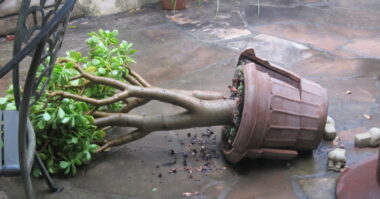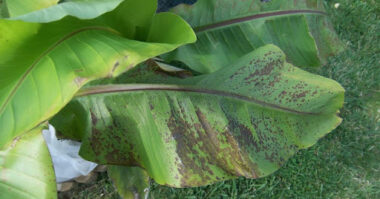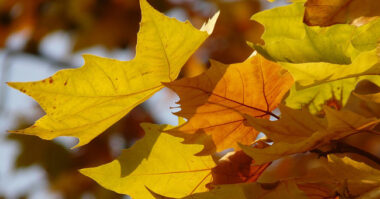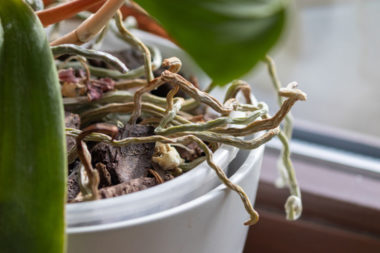Sometimes a tree dies or becomes dangerous because of its location. At that time, it is wise to cut it down to avoid any danger.
It is also possible that we want to proceed with a felling in order to minimize the spread of a disease or insects, or to prioritize another type of surrounding tree, a cedar hedge for example.
Contents
Do trees die?
Perpetual rejuvenation However, trees do die, there is no doubt about it, but it is very rarely old age that takes them. Their end is very often due to external factors: fire, lightning, a saw… If they have time with them, they will die in pieces, slowly.
Is my tree dead?
If the tree you are concerned about is indeed dead, it will have no leaves and almost no branches. For a more complete check, simply scrape off the bark:
Why is my tree dying?
But a new phenomenon is appearing: trees are dying, not because they are cut or burned, but because of global warming and the extinction of biodiversity.
When is the best time to remove a tree?
There are good seasons for felling trees, especially when the wood is going to be used as firewood or by a sawmill. In principle, the wood should be felled “off sap”, that is to say in winter, from November to March.
How to remove a dead tree in 6 steps?
Felling a tree is an operation reserved for professionals or experienced individuals. Indeed, felling a tree by yourself can be very dangerous when you do not master the technique of felling trees. The risks are considerable: destruction of homes or surrounding facilities, injuries and, in the most serious cases, death.
1. Be prepared
When it comes to cutting down trees with a chainsaw, preparation is key. If you plan the felling of a tree and the forestry equipment to bring, you are not only prepared for a safer work session, but the work after the tree is felled will be much easier.
First, ask yourself if the area has any significant obstacles, such as overhead lines, roads or buildings. Put up warning signs if you know that a road crosses the forest area or that many people pass through on a daily basis.
2. Check the direction of fall
Follow up by determining the direction of fall through careful examination of the tree. What do the branches look like and how are they growing?
Also consider the direction of the wind. If you are unsure of the tree’s natural fall direction, move away from the tree and check with a plumb line (see facts insert for details).
Clear the area around the tree in the expected direction of fall. Also clear the 45-degree space behind the tree in both directions to provide a path of retreat.
3. Prune the trunk
Once you have cleared the area, set up your warning signs and decided on the direction of the tree fall and your retreat route, you need to check that you have enough fuel in the tank for the task at hand.
Next, you need to prune the trunk to remove any twigs and branches that might get in the way when cutting the felling line. The safest way to prune is to work with a pull chain (under the bar) from the top down.
4. Choosing the cutting technique
When the trunk has no more branches up to shoulder height, the felling cut should be made. When doing this, two things must be remembered: the hinge must be of uniform thickness with the right dimensions and the wedge or felling lever must be inserted before the tree can pinch the bar.
The technique to be used to make the cut depends on the size of the tree and the slope, as well as the dimensions of the chainsaw used for the felling. We have compiled information on the different techniques here, so that you can find the method that is best suited to your conditions.
5. Check for disease
If you notice that the wood is discolored and soft or if the lower part of the trunk looks swollen or diseased, you should be very careful. This indicates that the tree is rotten and that the wood fibers are less resistant.
In this type of situation, fell the tree in the direction of natural fall and use a winch if in doubt. Rot usually remains higher in the tree, so it may be possible to fell the tree with a higher stump.
6. Choosing your tools
There are several felling tools to choose from when felling the tree. The size of the tree determines the type of forestry equipment needed. For smaller trees, you normally do not need felling tools. Physical strength is sufficient, possibly with the help of a long pole.
The felling wedge provides greater felling force than the various types of felling levers. In extreme cases, you can use a rope and winch, which is the safest and most powerful method of felling a tree. See the facts sidebar for more information on the different tools.
Why cut down a tree
The tree is in the wrong place
Too often trees are planted in the wrong place because no thought is given to their mature size. It is difficult to imagine at the time of planting that a small shoot could one day exceed twenty, thirty or even forty meters in height and a span of several dozen meters as well.
So if the shoot in question was planted between two houses, near a building or a terrace, the situation can become complicated. The tree can be the source of unwanted shade, its roots can jeopardize foundations, lift up masonry elements or tarmac.
The tree poses safety problems
Safety issues can also be related to the improper location of a tree, which has been planted too close to a home or public infrastructure. In this case, a neighbor or a municipality may demand that the tree be cut down.
It can also be a case of a tree that did not pose a problem until now and that has been damaged or even partially uprooted during a gale or a storm. The threat of falling makes it necessary to take the initiative and cut down the tree.
For sanitary reasons
The tree is affected by a disease, a fungus or a parasite and no means of control will save it. It represents a danger in the medium term because it will be more and more fragile and may fall without control.
Above all, it can transmit the disease or the parasite to the surrounding trees. For the health of other trees, it is therefore better to cut down the affected tree as soon as possible.
To preserve other trees
In a garden or a park where several trees live side by side, it often happens that one tree is much more vigorous than the others.
Without intervention, it will take advantage and grow faster than its fellow trees until it gradually deprives them of light, water and vital elements of the soil. If you wish to prevent this development, there is only one solution: shoot the conqueror.









